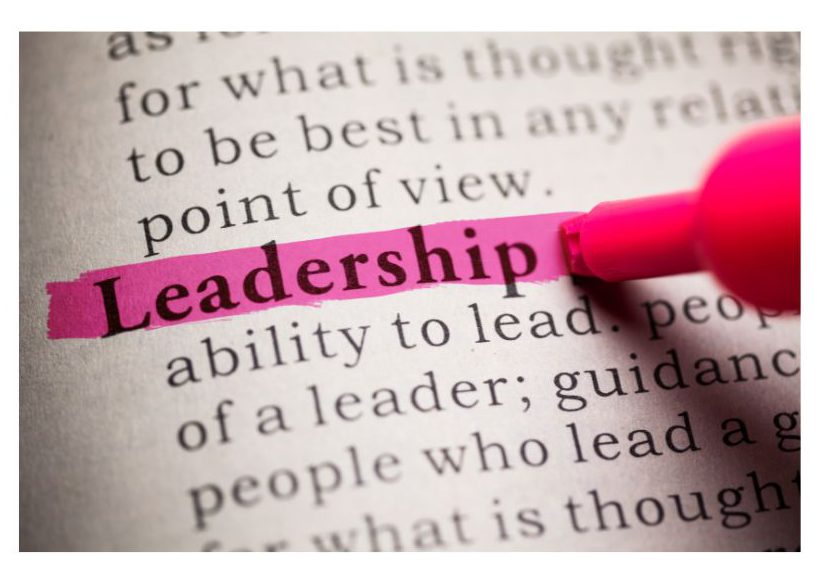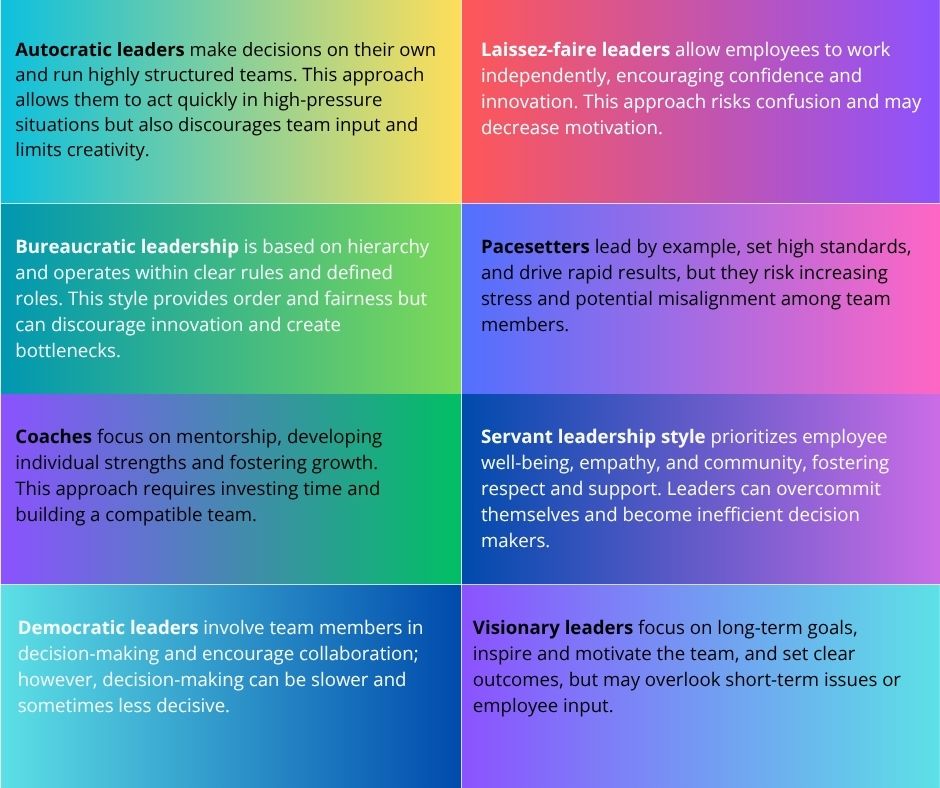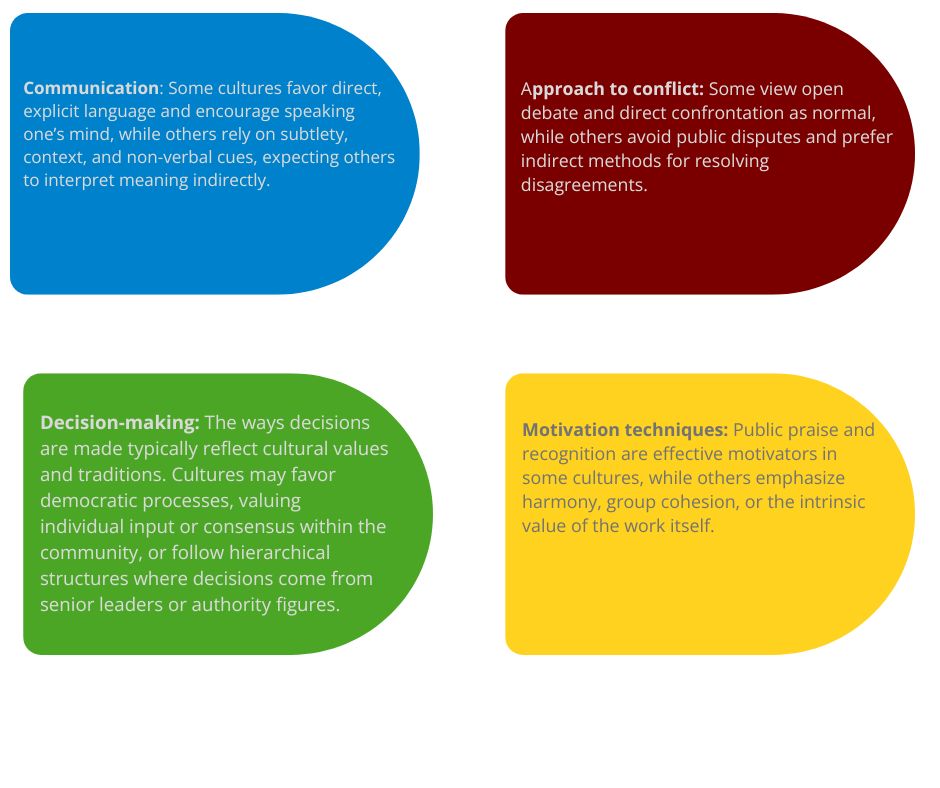
How to be a Leader on a Global Scale
Posted by
If you’re asking yourself how to be a leader, you’ve already taken the first step toward becoming one. Great leaders pave the way forward in every industry, inspiring others and uniting teams under a shared purpose and vision.
Throughout your life, you’ve been exposed to many different leaders; coaches lead sports teams, teachers lead classrooms, and directors lead choirs, bands, and shows. You’ve probably stepped into a leadership role yourself at some point by taking charge of a group project or starting a volunteer initiative at your school.
You’ve likely seen and experienced countless examples of leadership in your community, but what about being a leader on a bigger stage? How do individuals like you go from being team captains in gym class to the heads of international companies, non-profits, and worldwide organizations?
While core leadership behaviors never go out of style, leading in a global setting isn’t quite the same as leading at home. In a world of constant change, we must continually ask how to be a leader because how we lead is evolving, too. Let’s look more closely at the qualities of a strong leader and the skills leaders need for success on a global scale.
What does it mean to be a good leader?
Every organization defines how to be a leader differently. Someone from a corporate culture, when asked how to be a leader, might say you need to make measured decisions and deliver results to shareholders. However, someone from a community-based organization might have a different perspective on how to be a leader, defining leadership as centered on advocacy, modeling values, and empowering others.
The traits of a leader influence team performance and shape an organization’s culture. By setting standards, leaders communicate expectations and values in the workplace. But being a leader is not a one-size-fits-all approach. Leadership requires contextualization; every field, company, and team has its own dynamics and standards.
The best way to become an effective leader? Deciding what kind of leader you want to become. Check out these leadership behaviors and styles:
With pros and cons for each, it is clear there is no single “right” approach to how to be a leader. However, these styles share several common qualities of a strong leader worth cultivating.

Key traits of a leader
Many organizations invest in professional development programs to teach employees how to be a leader. Why? Because being a leader isn’t as simple as telling others what to do or praising or criticizing teams for their successes and failures. It’s a complex process that requires building relationships and inspiring teams through action and support.
When discussing how to be a leader, several traits surface repeatedly. Qualities of a strong leader include:

Along with these key soft skills, leaders also bring a level of expertise and experience needed for making strategic, informed decisions. For those seeking to travel and make a global impact, being a leader requires two additional core skills: strong collaboration and a global mindset.
A global mindset allows people to see the world as full of opportunities, differing perspectives, and alternative approaches. Beyond respect, a global perspective is the intercultural competence to learn from diverse individuals and approach other cultures with respect and empathy. It requires recognizing the deep connection between global issues and a commitment to working collaboratively toward solutions.
Great leaders redefine how to be a leader by challenging outdated assumptions. They know when to defer to others and when to trust and have confidence in their own ideas. Being a leader means being able to switch seamlessly between roles as a teammate, boss, bridge-builder, and mentor. However, the question of how to be a leader becomes more complex as organizations grow, scale, and diversify.
Leading in a global context
Learning how to be a leader starts with understanding the people you are leading. Culture plays a powerful role in shaping how to be a leader in different parts of the world. For instance, cultures that value individualism versus collectivism or tradition versus innovation will directly influence and necessitate distinct leadership behaviors.

Leadership behaviors include having confidence in your leadership style while respecting that others may approach situations differently. It requires the flexibility to adapt to different scenarios and the openness to embrace cultural perspectives beyond your own.
6 Global leadership skills
Still wondering how to be a leader on a global scale? Check out these six leadership behaviors and skills for making an impact:
1.Cultural intelligence. Cultural intelligence is the ability to understand, respect, and navigate differences in perspectives, traditions, and communication styles. Leaders with this skill pay attention to cultural norms and adapt their approach to ensure inclusivity and effective collaboration.

2. Ethical decision-making. Ethical decision-making is the capacity to make choices grounded in fairness, honesty, and integrity. Leaders demonstrate this trait by considering the long-term impact of their actions on employees, stakeholders, and the organization. They hold themselves accountable, maintain transparency, and prioritize doing the right thing even when it is challenging.

3. Communication. Many people think learning how to be a leader means taking charge, but true leadership begins with listening. Effective communication involves both clearly expressing ideas and understanding others’ viewpoints.

4. Adaptability. Adaptability is the ability to respond effectively to changing conditions, unexpected challenges, or new information. Adaptable leaders remain flexible, experiment with new solutions, and adjust priorities when needed.

5. Self-awareness. This is one of those invisible traits of a leader that appears in every aspect of their work. Self-aware leaders understand their own strengths, weaknesses, and how their behavior affects others. They reflect on their decisions, monitor their impact on team dynamics, and recognize personal biases and areas for growth.

6. A willingness to grow. True leaders never stop learning how to be a leader, even as their experience increases. They embrace new challenges, reflect on successes and failures, and continuously expand knowledge and skills.

Part of learning how to be a leader is learning how to overcome obstacles. So, let’s talk about a few you might face.
Common leadership challenges and how to overcome them
Understanding how to be a leader in a global context means preparing for challenges. Often, the most crucial traits of a leader appear in how they handle new or unexpected conflicts and situations.
Barriers to communication
Collaborating with global teams can be rewarding, but it also creates communication challenges. Even if everyone speaks the same language, subtle differences in tone, idioms, or body language can lead to misunderstandings. When languages differ entirely, the reliance on translators or interpreters makes clear communication even more critical.
Qualities of a strong leader include knowing how to handle these difficulties with grace, understanding, patience, and humility:
- Always clarify, repeat, or paraphrase what team members say to ensure understanding.
- Learn key cultural norms, including basic customs, gestures, and professional etiquette, to avoid unintentional offense.
- Leverage technology and use multiple communication channels (written summaries, visual aids, verbal explanations, etc.) to reduce misunderstandings.
Managing workplace expectations
Cultural differences extend far beyond leadership styles. International teams approach work practices in unique ways, from defining working hours and prioritizing tasks to managing deadlines and organizing meetings. Some cultures, like Japan and South Korea, value strict adherence to schedules, while others, like Finland and Australia, take a more flexible, relationship-focused approach to time.
Encouraging an open dialogue about work preferences, scheduling, and priorities can help build mutual understanding:
- Set clear expectations early, including deadlines, communication norms, and decision-making processes.
- Observe and ask — note how team members approach tasks, and ask questions to clarify differences rather than assuming one way is “correct.”
- Be flexible where possible, adapting your own style to accommodate others’ approaches without sacrificing key goals.
Creating shared goals
Being a leader means uniting people around a shared vision, which is especially important when working across teams with different priorities or understanding of others’ responsibilities and goals. The absence of a shared focus can scatter efforts, increasing the risk of missteps and miscommunication.
Clearly defining the team’s objectives and articulating how each role contributes to the bigger picture helps everyone move in the same direction:
- Encourage collaborative goal-setting; this allows each member to contribute their perspective and take ownership of both individual and team outcomes.
- Create measurable milestones; breaking larger objectives into smaller, trackable steps helps keep everyone aligned.
- Schedule updates or briefings to review progress, address conflicts, and adjust priorities.
How to be a leader when you’re still in high school
Learning how to be a leader isn’t something that happens overnight. But you can start cultivating your leadership skills before heading to college. Developing the traits of a leader requires practice and a willingness to learn from others.
If you’ve ever participated in a group project, team sport, club, or extracurricular activity, you’ve probably seen great (and not so great) leadership behaviors in action. When deciding how to be a leader, consider what you admire and want to emulate and the behaviors you want to avoid. Then, look for opportunities to become a leader yourself and build confidence, maybe through a summer internship.

Another great way to learn how to be a leader? Finding a mentor. Great mentors teach skills and demonstrate important leadership behaviors through example. Observing key traits of a leader in action helps you learn effective communication, decision-making, and conflict resolution strategies. A mentor can also help guide you as you pursue passion projects, step into formal leadership roles, and begin leading your own initiatives.
Discovering how to be a leader means embracing both success and failure as opportunities to learn. You won’t always succeed on the first try, but making mistakes is how you learn and grow.
How to be a Leader - Takeaways
The best way to learn how to be a leader? Practice leadership in small, everyday moments. As you start carving out your own path as a leader, remember:
- There are different leadership styles. By understanding your strengths and staying flexible, you can feel confident guiding others in any context.
- Soft skills are crucial in any setting. A key aspect of being a leader is the ability to work with and inspire others. Motivating teams and building trust requires active listening, clear communication, and effective collaboration.
- Global leaders are culturally aware and globally minded. They understand and respect diverse perspectives, can navigate cultural differences, and want to learn from people whose backgrounds and experiences differ from their own.
- Leadership is about action, not position. You don’t need an official title to demonstrate leadership behaviors. Put leadership into practice now by taking initiative, making decisions, and stepping forward to address challenges.
Opportunities exist everywhere. In any collaborative effort toward a shared goal, you have the chance to step up, offer guidance, and help move things forward. Being a leader means taking the leap and trusting yourself, even amid uncertainty and challenges, to guide your team toward success.
Blog Categories
- Career Advice
- College Admissions
- Colleges & Universities
- Financial Aid and Scholarships
- For Counselors
- For Parents
- For Students
- Gap Years
- Mental Health and Wellness
- Online Learning
- Performing and Visual Arts
- STEM Majors and More
- Summer Programs
- Teen Volunteering
- Trade & Vocational Schools
- Tutoring & Test Prep

Organization with listings on TeenLife? Login here
Register for Free
We’re here to help you find your best-fit teen-centered academic and enrichment opportunities.
Forgot Password
"*" indicates required fields








